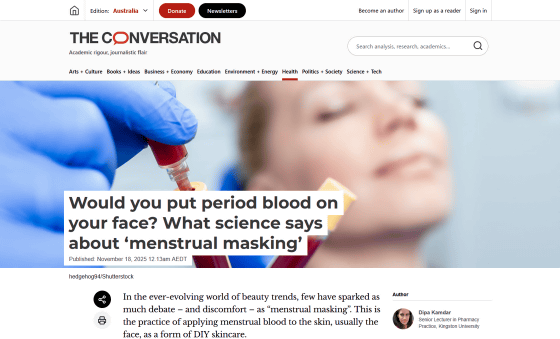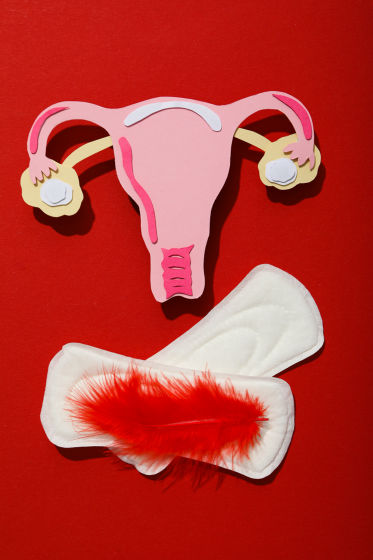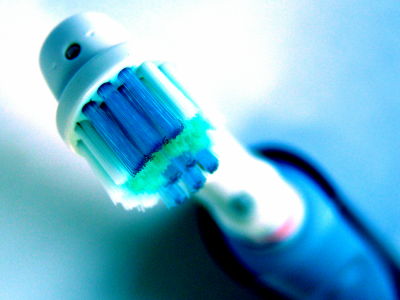'Menstrual masks,' which involve applying menstrual blood to the face, are becoming a hot topic on social media, but do they really have any effect on the skin?

Social media is awash with the latest beauty trends, but sometimes the effects are questionable or even creepy. Dipa Kamdar, a senior lecturer in pharmaceutical practice at Kingston University in the UK, explains the benefits and dangers of menstrual masking, a beauty technique that involves applying menstrual blood to the face.
Would you put period blood on your face? What science says about 'menstrual masking'

'Menstrual masks,' which involve applying menstrual blood during menstruation, have become a hot topic on social media, with related videos tagged with hashtags like '#periodfacemask' garnering over billions of views. At the time of writing, however, many women are also using them as pranks on their male partners.
Many videos show menstrual blood being applied to the face for a few minutes before being washed off, and there are no clear rules about how much blood to use or how long to apply it for. Some supporters see menstrual masks as more than just a beauty treatment, but as a spiritual ritual to connect with one's body and femininity.

At the time of writing, there's no scientific evidence to support using menstrual blood for skin care, but Kamdar acknowledges that some of the biological components in menstrual blood show promising potential for medical research.
Proponents of menstrual masks claim that menstrual blood contains stem cells,
In fact, a 2018 study found that plasma isolated from menstrual blood was more effective than regular plasma in wound healing. This surprising effect is thought to be related to the unique proteins and bioactive molecules contained in menstrual blood, substances that allow the uterus to repair itself each month. Researchers are currently investigating whether synthetic menstrual fluid can be used to treat chronic wounds.
Additionally, in the field of stem cell research, menstrual- derived stem cells (MenSCs), a type of mesenchymal stem cell that can differentiate into various cell types, have been attracting attention. Mesenchymal stem cells have been shown to promote skin healing by promoting collagen production, reducing wrinkles, and releasing growth factors that repair damage caused by burns, UV rays, and wounds.
Because menstrual stem cells are thought to be versatile and safe, they are seen as a promising option for developing therapies to regenerate skin and delay photoaging (skin aging caused by prolonged exposure to sunlight).

While there is certainly evidence suggesting the effectiveness of menstrual masks, there are risks associated with applying menstrual blood to the face. Unlike ' vampire facials ,' which involve extracting blood from blood vessels and applying it to the face, menstrual fluid contains a complex mixture of not only blood but also endometrial tissue, vaginal secretions, hormones, and proteins.
In addition, there is a possibility that bacteria and fungi such as Staphylococcus aureus may be mixed in when passing through the vagina. Staphylococcus aureus is a common bacterium that lives on the skin, but if it enters a wound or pore, it can cause an infection, and there is also a risk of infection with viruses that cause sexually transmitted diseases through the skin.
Kamdar points out that menstrual masks sit at the intersection of body positivity , cultural ritual, and pseudoscience. Some see them as an act of celebrating the menstrual cycle and pushing back against stigma around periods, while others see them as an unproven and potentially risky beauty trend.
'While the biological richness of menstrual blood is undeniable, its safe and effective use should remain the domain of controlled medical studies, not DIY skincare routines. As with many popular health trends, it's important to separate the symbolism from the science,' Kamdar said.
Related Posts:
in Free Member, Science, Posted by log1h_ik







